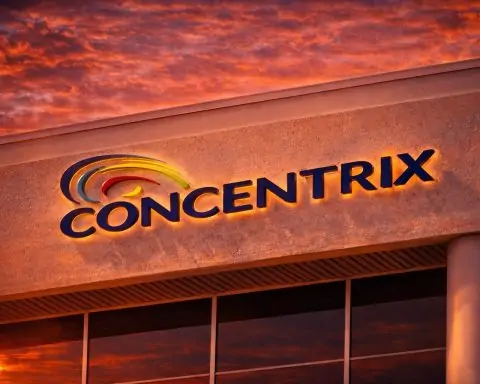- Honoring Heroes: Earlier this month, dozens of World War II, Korean War, and Vietnam War veterans from West Texas took an emotional Permian Basin Honor Flight to Washington, D.C., to visit the memorials dedicated to their service [1]. One 93-year-old veteran said, “At 93, I never dreamed I could take a trip like this one”, describing the journey as a once-in-a-lifetime honor [2].
- Oil Drilling Frenzy: The Permian Basin – America’s top oilfield – continues to see surging drilling activity. In a single week (Oct. 10–17), Texas regulators issued permits for dozens of new Permian wells by operators large and small [3] [4]. Back in May, the Permian-rich Midland district accounted for 302 of Texas’s 557 drilling permits (over 50%) [5] [6] – underscoring the region’s outsized role in U.S. oil expansion. Permian output hit a record ~6.3 million barrels per day last year (about half of total U.S. production) [7] and continues to climb to new highs even as companies focus on efficiency.
- Record Oil, Power Crunch: Soaring production has brought prosperity – and growing pains. A new power crunch is hitting West Texas. According to the Financial Times, “there isn’t enough electricity to go around” in the Permian, with new industrial-scale data centres threatening to suck up every last electron” [8]. In other words, the local grid is straining to keep pace with the oil boom and an influx of energy-hungry projects. Some companies are responding by building their own on-site power: for example, one Midland startup pivoted from gas drilling to developing a 1-gigawatt AI data center campus powered by its own Permian natural gas supply [9].
- “Drill, Baby, Drill” No More: Despite the frenzy of rigs, industry leaders insist this boom is more restrained than the last. “We still expect to see growth in the Permian but…moderated versus the rate of growth we have seen before,” says Chevron executive Barbara Harrison, noting the company now targets ~9–10% annual production growth in its Permian operations (down from 14% last year) [10]. Others agree that the days of unchecked output are over – “Drill, baby, drill is not going to happen,” says Shannon Flowers of Permian producer Coterra Energy, stressing that political pushes for ultra-low fuel prices are “not necessarily good for producers” who need to keep an eye on profits [11]. Companies have shifted from reckless expansion to capital discipline: they’re drilling, but with an eye on shareholder returns and stability rather than flooding the market.
- Stocks & Outlook:Oil prices have pulled back – Brent crude hovered around $62–64 per barrel in mid-October [12] as global supply outpaces demand (the IEA warns of a potential 4 million barrels-per-day surplus by 2026 [13]). Yet energy stocks remain attractive. Wall Street analysts are broadly bullish on the oil majors: for example, Chevron (CVX) carries a consensus “Buy” rating with price targets in the $170s (about 10–15% upside from recent levels) [14]. The company’s hefty 4.5% dividend yield – highest among Big Oil peers – also cushions investors [15]. Meanwhile, legendary investor Warren Buffett is doubling down on Permian oil: his Berkshire Hathaway already owns ~28% of Occidental Petroleum (OXY) – a leading Permian producer – and is reportedly in talks to spend $10 billion more to buy Occidental’s chemical division [16] [17]. Even beyond traditional oil, the Permian’s rich resources are drawing new ventures: tiny New Era Energy & Digital (NASDAQ: NUAI) saw its stock skyrocket 84% in one day after unveiling plans for a massive AI data center powered by Permian gas [18], a sign of how West Texas energy is fueling bold new bets.
Honoring Local Heroes: A Flight of Gratitude
In the Permian Basin, community pride runs as deep as the oil wells. This was on full display with the latest Permian Basin Honor Flight, which gave dozens of local veterans a three-day journey to Washington, D.C. to reflect on their service. Departing Midland on October 9th, the group visited the WWII, Korean War, Vietnam, and Lincoln Memorials, Arlington National Cemetery, and other landmarks dedicated to American sacrifice [19]. For many, it was an emotional pilgrimage. “Over the past weekend, this trip makes a veteran feel appreciated,” one participant noted, as local news documented their experience. Nonprofit organizers and community sponsors (including local businesses) covered the costs so that all honored veterans travel at no cost [20]. When the veterans returned home on October 11th, they were greeted by cheering family, friends and neighbors, a testament to West Texas’s profound respect for those who served [21].
The impact on the veterans was profound. “Such an experience it took me 3 weeks to let it all sink in,” said one Navy veteran of a prior honor flight [22]. From the Permian group, 93-year-old Korean War veteran Mark K. summed it up: “At 93, I never dreamed I could take a trip like this one” [23]. After decades, the journey brought him a sense of closure and gratitude. These personal stories underscore that amid an oil boom, the Permian Basin is not just about pumps and pipelines – it’s a tight-knit community that remembers its heroes. Local oil companies often support such patriotic initiatives; for example, Chevron’s Midland office has previously partnered in Honor Flight efforts, helping recognize the region’s “greatest generation.” “Our veterans have already paid for these memorials with their service – it’s our turn to pay them back,” as one Honor Flight organizer put it at the send-off ceremony (a sentiment widely shared across the Permian).
Oil Permits Soar as the Permian Leads America’s Production
While those veterans were touring Washington, the home front in West Texas remains as busy as ever – oil drilling in the Permian is booming. The Permian Basin, which spans western Texas and southeastern New Mexico, has long been the engine of U.S. oil growth, but recent figures are jaw-dropping. Texas regulators are green-lighting new wells at a rapid clip. During the week of Oct. 10–17 alone, the Railroad Commission of Texas (RRC) issued permits for a flurry of development wells across the Permian [24] [25]. Company names in the permit logs range from smaller independents like Hibernia Resources and Firebird Energy to larger operators, indicating broad participation in the boom. These weekly permits tallies add up: zooming out to May 2025 data, the RRC reported 557 new drilling permits statewide that month, of which a remarkable 302 were in the Midland district – essentially the heart of the Permian [26] [27]. In other words, well over half of all new Texas oil wells were slated for the Permian, illustrating how central this region is to America’s energy supply.
The production numbers reinforce that dominance. Output in the Permian Basin hit ~6.3 million barrels per day (bpd) in 2024, accounting for roughly 50% of total U.S. oil production [28]. That makes the Permian alone the equivalent of a mid-size OPEC country in output. And it’s still growing: executives forecast another ~250,000–300,000 bpd increase in 2025 [29]. To be sure, that growth rate (around +5%) is slower than the torrid pace of prior years (2024 saw +380,000 bpd) [30], but it’s growth nonetheless – pushing U.S. oil to new record highs. In fact, the U.S. Energy Information Administration expects total U.S. crude production to average 13.4 million bpd in 2025, thanks largely to Permian gains [31].
What’s remarkable is that the Permian is breaking output records while also cutting pollution. A new analysis by S&P Global found that greenhouse gas emissions from Permian operations fell ~20% from 2022 to 2024, even as production rose by the equivalent of 500,000 bpd [32]. Industry players have deployed better technology – from advanced methane leak detection to electrified equipment – to curb emissions per barrel. “This is a whole new ballgame,” said Kevin Birn, head of the Center for Emissions Excellence at S&P, noting it’s almost unheard of to have “more barrels came with lower emissions. It’s a have-your-cake-and-eat-it-too moment.” [33] Major producers like Chevron, ExxonMobil, and Occidental have all pledged “net-zero” operational goals and are tightening up practices like flaring. The Permian Basin Petroleum Association president Ben Shepperd pointed out that companies are collaborating on methane reduction initiatives and deploying new tech so that “operators are continuing to see emissions reductions” even as they pump more [34] [35]. It’s a bright spot of progress that could give Permian operators an edge in a carbon-conscious world – cleaner barrels may face less regulatory and investor pushback.
Texas Power Grid Strains Under the Boom
The flipside of the Permian boom is a strain on local infrastructure – notably, electric power. Oil operations today are highly energy-intensive: drilling rigs, fracking pumps, well-site compressors, and pipelines all require electricity (or burn fuel) to operate. And now, a new breed of energy guzzler has arrived in West Texas: large data centers and crypto mining farms drawn by the region’s cheap land and abundant gas. This has led to an unusual situation: the biggest U.S. oilfield is running short on power. “The power crunch has come home to roost here in Texas… There isn’t enough electricity to go around in the country’s biggest oilfield,” the Financial Times reports, “with data centres threatening to suck up every last electron.” [36] In plain terms, parts of the Permian don’t have enough grid capacity to meet the surging demand from both traditional oil operations and these new, power-hungry tech installations.
This power squeeze is already impacting development. Oil producers report delays in getting electric hookups for new infrastructure, forcing them to rely on diesel generators in some cases (which are dirtier and costlier). The situation is so acute that some companies are building their own power plants on-site. For example, New Era Energy & Digital, a small Midland-based firm, has embarked on a 50/50 joint venture to construct Texas Critical Data Centers (TCDC) – a massive campus of AI supercomputing data centers – right in the Permian oilfields. Crucially, TCDC will generate its own electricity by tapping directly into natural gas from onsite wells [37]. By vertically integrating “power and compute,” the project aims to keep the servers humming even if the external grid is maxed out. It’s an innovative solution (complete with plans for carbon capture on the gas turbines) that attracted investors’ attention – New Era’s stock soared on the news – but it underscores the broader challenge.
Texas officials and grid planners are now playing catch-up. Efforts are underway to build more high-voltage transmission lines and substations in the Permian region, and to incentivize on-site solar and battery installations to help meet peak loads. The Electric Reliability Council of Texas (ERCOT), which operates the state’s grid, has warned that West Texas load growth (from oil facilities, Bitcoin mines, and data centers) is outpacing infrastructure and could require significant upgrades. The stakes are high: if electricity constraints aren’t resolved, it could cap the Permian’s growth. As one energy analyst quipped, “It’s ironic – the Permian fuels America’s lights, but now its own lights risk going out unless we invest more in the grid.” The coming years will test how quickly Texas can expand its electrical backbone to support both the oil boom and the digital boom converging on the plains of West Texas.
“Controlled Growth” – Oil Executives Preach Discipline
A decade ago, a spike in oil prices would unleash a drilling free-for-all in shale basins like the Permian. Not this time. In 2025, industry leaders are emphasizing controlled, profitable growth over sheer volume – even if a former U.S. president is urging otherwise. At an oil conference in Houston earlier this year, executives openly discussed tempering their output plans. “We still expect to see growth in the Permian,” Chevron’s Vice President of crude supply Barbara Harrison told Reuters, “but we expect to see that moderated versus the rate of growth we have seen before.” [38] She noted Chevron’s Permian production jumped 14% in 2024 – reaching a record 992,000 barrels of oil equivalent per day – but the company is now guiding for roughly 9–10% annual growth in the next few years [39]. In other words, Chevron will keep expanding in West Texas, but not in “hyperdrive” mode.
This mindset shift is echoed across the field. Shannon Flowers, a director at Coterra Energy (another Permian producer), put it bluntly: “Drill, baby, drill is not going to happen.” [40] She was referencing the famous slogan from the last oil boom – and pushing back on any notion that industry will return to gushing out supply at any cost. One source of pressure to ramp up is political: the current administration in Washington has called for maximizing U.S. oil output to keep fuel prices low. “The tension we have is that [policymakers] want lower energy prices. That’s not necessarily good for producers,” Flowers added [41]. Simply put, pumping flat-out to flood the market would crash oil prices and hurt drillers’ bottom lines – a lesson brutally learned in the 2010s, when overproduction led to a price collapse.
Today, Permian operators are prioritizing profit over volume. They are sticking to budgets, drilling the best locations first, and returning cash to shareholders. This shows in company actions: ExxonMobil and BP have slowed their share buybacks and even announced layoffs as oil prices sag below $80 [42]. Chevron too has been cutting costs – planning a ~20% reduction in workforce and selling off non-core assets [43] [44] – aiming to boost efficiency rather than simply “drill more.” The focus is on capital discipline: ensuring each new well is low-cost and high-output. The industry has also become more responsive to market signals; as demand forecasts softened and inventories rose this year, Permian producers trimmed drilling rigs to avoid oversupply. This new playbook – sometimes called “shale 3.0” – is all about steady, shareholder-friendly growth. As Mike Wirth, Chevron’s CEO, summed up, investors now expect oil CEOs to act like “CEOs, not wildcatters.”
In practical terms, this discipline means the Permian’s growth, while robust, will likely remain in the high-single-digit percentages annually rather than the frenzied double-digit leaps of the past. That still translates to substantial volume – the basin could add hundreds of thousands of barrels per day each year – but done in a way that hopefully sustains prices. It’s a balancing act: drill too little and OPEC or others could seize market share; drill too much and prices could tank. So far, the Permian players are walking that tightrope carefully, much to Wall Street’s approval.
Market Impact: Oil Glut Vs. Oil Stocks
The Permian’s torrid growth is contributing to a global oil supply glut that has kept a lid on prices. Despite geopolitical tensions, the oil market in late 2025 finds itself surprisingly well-supplied. OPEC+ producers (like Saudi Arabia) ramped output into the summer, and combined with record U.S. production, the International Energy Agency now warns of a potential 4 million barrel-per-day surplus by 2026 if demand doesn’t pick up [45]. In mid-October, benchmark Brent crude traded around $63 per barrel [46] – a far cry from the $80–100 levels seen a couple years ago. For Permian producers, $60 oil is a double-edged sword: it’s low enough to squeeze profit margins, but thanks to improved efficiency, many can still make money (the breakeven price for prime Permian wells can be in the $30s or $40s per barrel). However, weaker prices have indeed dented earnings for the supermajors. Chevron’s Q2 2025 profit, for instance, fell to $1.45 per share, down from $2.43 a year earlier, partly due to lower oil realizations [47]. Similarly, other big players saw year-on-year profit declines. The industry responded by tightening belts – hence the cost cuts and slower project rollouts noted above.
For energy investors, the key question is whether these stocks still have upside in a lower-oil-price environment. Many analysts say yes. Major oil companies are generating solid cash even at $60 oil and are valuing shareholder returns. Chevron (CVX), for example, returned $5.5 billion to shareholders last quarter via dividends and buybacks [48]. It currently yields about 4.5% – the highest dividend yield among oil majors [49] – making it attractive for income seekers. Analyst surveys show 16 out of 21 analysts rate CVX stock a “Buy” with an average price target around $170, implying roughly 10–15% upside from the mid-$150s stock price [50]. Some bullish forecasts (from UBS, Wells Fargo and others) even peg the stock near $190 [51]. The sentiment is that Chevron’s strong balance sheet, hefty Permian assets, and the newly integrated Hess (which brought lucrative Guyana oil fields) position it well for a rebound if oil prices firm up again [52] [53]. Its peer ExxonMobil (XOM) likewise has a chorus of bullish analysts, especially after Exxon’s recent acquisition of Pioneer Natural Resources (a major Permian pure-play) added even more prime acreage to its portfolio.
Then there’s Occidental Petroleum (OXY) – practically a proxy for Permian enthusiasm. OXY has one of the largest Permian positions and caught headlines as Warren Buffett’s favorite oil stock. Berkshire Hathaway steadily accumulated Occidental shares over the past three years and now owns about 28% of the company [54]. Buffett has praised CEO Vicki Hollub’s strategy and even secured warrants to buy more OXY stock. Now, reports say Berkshire is in talks to invest another $10 billion to acquire Occidental’s chemical subsidiary (OxyChem) [55]. This would be Berkshire’s biggest deal in years, effectively a doubling-down on OXY’s core business (since selling OxyChem would help Occidental focus on oil & gas and pay down debt). Investors read Buffett’s interest as a strong vote of confidence in Occidental’s Permian-centric future. Yet intriguingly, OXY’s stock has underperformed in 2025 – roughly flat on the year, versus double-digit gains for Chevron and Exxon [56]. Why? Analysts point to Occidental’s heavy debt load from past acquisitions and its exposure to weaker natural gas and chemical prices. Still, with production up 11% year-over-year (to 1.4 million boe/d in Q2) [57] and debt coming down via asset sales, OXY could be a coiled spring if oil prices rebound. The consensus 12-month target for OXY shares is around $50–$54, modestly above current levels [58] – but that could prove conservative if Buffett’s big bet pays off.
Finally, the Permian boom is giving rise to entirely new stock stories outside traditional oil. One eyebrow-raising example is New Era Energy & Digital (NUAI), a tiny Nasdaq-listed company in Midland, TX. Formerly a helium gas explorer, New Era rebranded this year and pivoted to developing that ambitious Texas Critical Data Center project on its Permian lands. The idea of pairing West Texas gas fields with cutting-edge AI computing proved to be catnip for speculative investors: in early October, NUAI’s stock price exploded by 84% in a single day after the company announced milestones on its data center plans [59]. Over a five-day span, the micro-cap stock nearly quadrupled. While New Era is still a pre-revenue speculative venture (and extremely volatile – it traded under $0.50 just last month), the market’s exuberant reaction signals that the Permian’s vast energy resources are attracting interest well beyond oil. From powering Bitcoin mines to AI supercomputers, the region is diversifying its energy economy.
Bottom Line: The Permian Basin today encapsulates a complex and evolving story. It’s a place where venerable WWII veterans receive heartfelt tributes one week, and wildcatters-turned-tech-entrepreneurs ring the Nasdaq bell the next. It’s a region of boom – in people, in oil, in innovation – but also one learning from past busts, trying to grow sustainably and smartly. The recent news highlights both the opportunities and challenges: unprecedented oil production, unprecedented strain on infrastructure; cautious optimism from executives, bullish bets from investors. As 2025 draws to a close, the Permian shows no signs of losing its crown as America’s energy powerhouse. But all eyes are on how the basin navigates the road ahead – managing its growth, upgrading its grid, honoring its history, and delivering value to those who have placed their faith (and capital) in this dynamic corner of Texas.
Experts agree on one thing: what happens in the Permian Basin will ripple far beyond West Texas – affecting gasoline prices, geopolitical leverage, corporate earnings, and even the trajectory of the energy transition. For now, the Permian’s pulse is strong, and its multifaceted boom – from hometown pride to high finance – looks set to continue, cautiously, into 2026.
Sources:
- First Alert 7 News – “2025 Permian Basin Honor Flight” (Oct 2025) [60] [61]
- Honor Flight Network – Veteran testimonials [62]
- Midland Reporter-Telegram – Permian drilling permits and emissions reports [63] [64] [65]
- Financial Times via Climate&Economy – “Permian facing a power crunch” (Oct 23, 2025) [66]
- TechStock² (ts2.tech) – Chevron stock analysis (Oct 19, 2025) [67] [68]; NUAI Permian data center report (Oct 10, 2025) [69] [70]; Buffett/OXY analysis (Sept 30, 2025) [71] [72]
- Reuters – “US Permian oil output to slow in 2025…” (Feb 6, 2025) [73] [74] (industry executive quotes)
- Midland Reporter-Telegram – “Permian emissions fall 20% as output rises” (Oct 14, 2025) [75] [76]
References
1. www.firstalert7.com, 2. www.honorflight.org, 3. www.mrt.com, 4. www.mrt.com, 5. www.mrt.com, 6. www.mrt.com, 7. www.reuters.com, 8. climateandeconomy.com, 9. ts2.tech, 10. www.reuters.com, 11. www.reuters.com, 12. ts2.tech, 13. ts2.tech, 14. ts2.tech, 15. ts2.tech, 16. ts2.tech, 17. ts2.tech, 18. ts2.tech, 19. www.firstalert7.com, 20. www.pbhonorflight.org, 21. www.firstalert7.com, 22. www.honorflight.org, 23. www.honorflight.org, 24. www.mrt.com, 25. www.mrt.com, 26. www.mrt.com, 27. www.mrt.com, 28. www.reuters.com, 29. www.reuters.com, 30. www.reuters.com, 31. jpt.spe.org, 32. www.mrt.com, 33. www.mrt.com, 34. www.mrt.com, 35. www.mrt.com, 36. climateandeconomy.com, 37. ts2.tech, 38. www.reuters.com, 39. www.reuters.com, 40. www.reuters.com, 41. www.reuters.com, 42. ts2.tech, 43. ts2.tech, 44. ts2.tech, 45. ts2.tech, 46. ts2.tech, 47. ts2.tech, 48. ts2.tech, 49. ts2.tech, 50. ts2.tech, 51. ts2.tech, 52. ts2.tech, 53. ts2.tech, 54. ts2.tech, 55. ts2.tech, 56. ts2.tech, 57. ts2.tech, 58. ts2.tech, 59. ts2.tech, 60. www.firstalert7.com, 61. www.firstalert7.com, 62. www.honorflight.org, 63. www.mrt.com, 64. www.mrt.com, 65. www.mrt.com, 66. climateandeconomy.com, 67. ts2.tech, 68. ts2.tech, 69. ts2.tech, 70. ts2.tech, 71. ts2.tech, 72. ts2.tech, 73. www.reuters.com, 74. www.reuters.com, 75. www.mrt.com, 76. www.mrt.com







